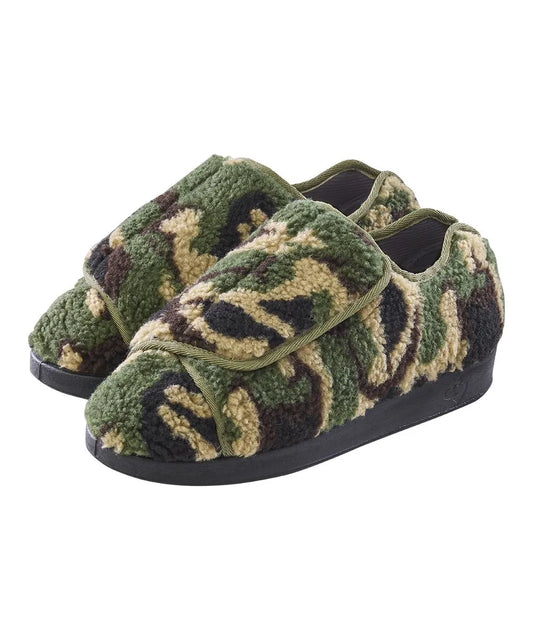Written by Nicole Fernandes
Particularly for parents of children with special needs, the world of assistive technology may be intimidating and perplexing. There is good news, though. Parents may choose the finest assistive technology for their children with the help of a broad range of tools and resources.
The realm of assistive technology offers a wide range of solutions, from adapted computer software to sensory equipment, communication devices, adaptable apparel, and helpful applications. Parents may make decisions that enable their children to thrive by taking into account elements including long-term advantages, specific requirements, and the availability of training and assistance. We will examine these many facets of assistive technology in this thorough guide, arming parents with crucial knowledge to help them select the best tools for their child's path to realizing their full potential.
These options can significantly improve the lives of children with special needs. You may help your child thrive and realize their full potential by taking the time to comprehend their special needs and abilities and choosing the proper assistive technology.
For parents of children with special needs, navigating the world of assistive technology may be intimidating. However, parents can find helpful tools to assist their child's particular needs and talents among the wide range of possibilities accessible.
Recognize Your Child's Special Needs
There is no one-size-fits-all approach to assistive technology. Each child has particular skills, obstacles, and needs. Understanding your child's strengths and areas that require help as a parent is essential. You can more effectively traverse the huge selection of assistive technology alternatives by being aware of their specific needs.
Investigate and Examine the Options
After you have a firm grasp of your child's requirements, you should investigate and consider the numerous assistive technology options available. Consult with your child's medical specialists, therapists, and educators first since they may offer insightful advice.
Adaptive software for computers
For children with specific disabilities, adapted computer software significantly improves communication and learning. Software is available in a variety of forms that may suit a range of skills and difficulties. Software for augmentative and alternative communication (AAC) can aid in the expression of ideas and thoughts in youngsters who have trouble communicating. Additionally, educational software may be modified to match unique learning requirements, and
Sensory Devices
For kids with an autism spectrum disorder or sensory processing issues, sensory devices can be quite helpful. By increasing or decreasing sensory input, these technologies aid in the creation of a secure and relaxing atmosphere. Weighted blankets, sensory swings, noise-cancelling headphones, and instruments for sensory integration are a few examples of sensory equipment. You may assist your child in controlling their sensory experiences and enhancing their general well-being by introducing sensory devices into their daily routine.
Mobility Assistance
Movement aid tools can considerably improve independence and movement for kids with physical limitations. These gadgets can include crutches, walkers, and manual or electric wheelchairs, among other types of mobility equipment. Depending on your child's unique requirements and capabilities, you can choose from a variety of mobility aids. To choose the best solutions and guarantee correct fitting and training, it is crucial to engage with healthcare professionals and mobility experts.
Adaptive Clothing
Adaptive clothing is a crucial component of assistive technology for kids with special needs. Children with physical limitations or sensory sensitivities may not always be able to wear traditional attire. Children with special needs can dress more easily and comfortably thanks to the advantages of adaptive clothes.
For instance, clothes with Velcro or magnetic closures can take the place of buttons and zippers, making it possible for kids with limited dexterity to dress themselves. For kids with sensory sensitivity, seamless and tagless clothes might help lessen their discomfort and annoyance. By enabling kids to dress in a way that suits their unique needs, adaptive clothing not only fosters independence but also improves their general well-being and self-esteem.

Kid's Pink Multi Anti-Slip Socks
Communication Aids
Children with speech and language disorders require the use of communication aids. These tools aid in communication, allowing kids to successfully express their needs, wants, and opinions. There are several solutions available, ranging from straightforward message boards and picture-exchange programs to more sophisticated electronic gadgets with speech output capabilities. When choosing the best communication tool for your kid, take into account their communication skills, preferences, and long-term objectives.
Assistance and Training with Assistive Technology
In addition to picking the appropriate assistive technology, it's crucial to make sure that the child and parents receive the required training and continuing assistance. To fully benefit from many assistive technology solutions, specialized knowledge and methods are needed. Parents and kids can benefit from training programs led by professionals or specialists who can teach them how to utilize technology efficiently and incorporate it into their everyday life.
Parents navigating the world of assistive technology can also benefit from continuing assistance through user groups, online forums, and helplines, which can offer direction, troubleshooting, and a feeling of community. Accessing training and support services may have a big impact on how well assistive technology is implemented and used for kids with special needs.
Consider the long-term advantages
It is critical to take the long-term advantages into account when selecting assistive technology for your child. Children's requirements may alter as they mature and mature. It is crucial to choose technology that your child can use as they grow and change. Look for solutions that offer customization options, scalability, and flexibility. Additionally, take into account assistive technology that fosters independence and skill development, enabling your kid to acquire confidence and autonomy as they advance.
In conclusion, children with special needs can dramatically improve their quality of life by using assistive technology. You may choose assistive technology wisely by being aware of your child's particular needs, looking into the options, and taking the long-term advantages into account. As what works for one child may not work for another, keep in mind that the process may include some trial and error. Be persistent in your search for your child's greatest match while keeping an open mind to many possibilities. You may give your kid the assistance they require to grow, realize their full potential, and enjoy a happy life with the proper assistive technology.















